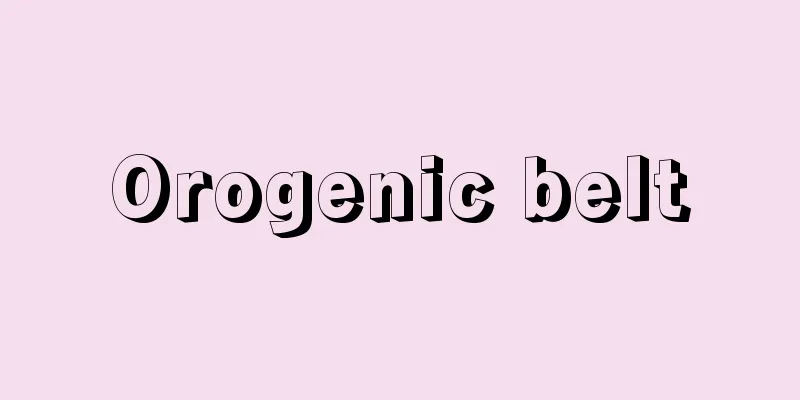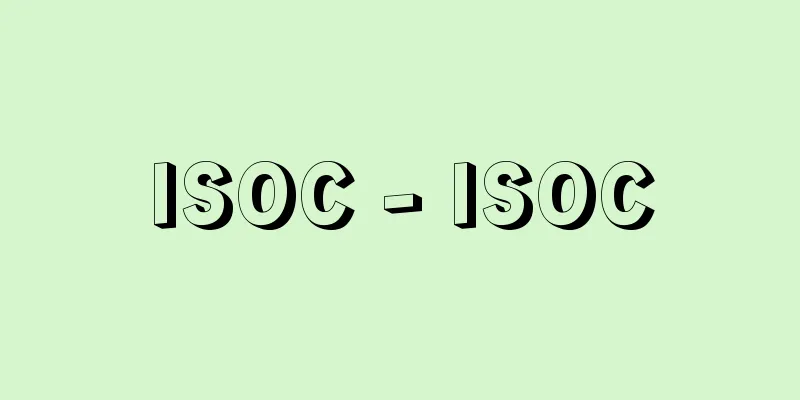Orogenic belt

|
A region that has undergone or is undergoing mountain-building. It is a long and narrow belt over 1,000 km long, with strata that are significantly folded or cut by thrust faults, granite or andesite, and metamorphic rocks. Looking at a large geological map, for example, the distribution of strata is monotonous in the Korean Peninsula and northern China, whereas the distribution of strata and rocks in the Japanese Archipelago is extremely complex, and there is also considerable volcanic and seismic activity there today. This shows that the Japanese Archipelago has been and is currently an orogenic belt. Around the Pacific Ocean, orogenic belts like the Japanese Archipelago have come together to form larger orogenic belts, which are called the Circum-Pacific orogenic belt. A similar large-scale example is the Alpine-Himalayan orogenic belt. The location of orogenic belts varies with time. In Europe, the Caledonian, Variscan (Hercynian) and Alpine orogenic belts were located in different places during the Early Paleozoic, Late Paleozoic, Mesozoic and Cenozoic eras. However, the Caledonian and Variscan orogenic belts have merged in eastern North America to form the Appalachian orogenic belt. Within the Japanese archipelago, the Honshu Arc has been an orogenic belt since the Silurian period of the Paleozoic era (approximately 400 million years ago), but the location of the center of orogenic movement has changed over time. Orogenic belts are formed when two continents collide, deforming the strata that had been deposited in the ocean between them, or when an oceanic plate subducts and adds strata and pelagic chert that have been deposited in ocean trenches, or when volcanic activity occurs on the continental plate side. [Toshio Kimura and Akihiro Murata] [References] | | | | |Pacific Circum- | | |©Shogakukan "> Mountain belts of the world Source: Shogakukan Encyclopedia Nipponica About Encyclopedia Nipponica Information | Legend |
|
造山運動を受けたか、または受けつつある地帯。著しく褶曲(しゅうきょく)したり、衝上(しょうじょう)断層で切られた地層、花崗(かこう)岩または安山岩、変成岩などが分布し、長さ1000キロメートル以上の細長い地帯をなす。大きい地質図についてみると、たとえば朝鮮半島や中国北部では地層分布が単調であるのに対して、日本列島では地層や岩石の分布が非常に複雑であり、またそこでは現在の火山、地震活動も著しい。これは日本列島が過去および現在、造山帯であることを示す。太平洋の周りには、日本列島のような造山帯が集まってより大きい造山帯ができていて、これは環太平洋造山帯とよばれる。同様な大きいスケールのものにアルプス‐ヒマラヤ造山帯がある。 造山帯の位置は時代によって異なる。ヨーロッパで古生代前期、古生代後期、中生代から新生代に、それぞれ位置を変えてカレドニア造山帯、バリスカン造山帯(ヘルシニア造山帯)、アルプス造山帯があった。しかし、カレドニア、バリスカン造山帯は北アメリカ東部では合体してアパラチア造山帯となっている。日本列島のうち本州弧は古生代シルル紀以降(約4億年前)造山帯であったが、造山運動の中心部の位置は時代とともに変わっている。 造山帯には、大陸と大陸が衝突して、その間の海洋に堆積(たいせき)していた地層が変形を受けたものや、海洋プレートの沈み込みによって海溝に堆積した地層や遠洋性のチャートなどが付加したり、大陸プレート側で火成活動がおこったりして形成されたものなどがある。 [木村敏雄・村田明広] [参照項目] | | | | | | | |©Shogakukan"> 世界の造山帯 出典 小学館 日本大百科全書(ニッポニカ)日本大百科全書(ニッポニカ)について 情報 | 凡例 |
>>: Song San Cai (English spelling)
Recommend
Leoninus
… The 12th and 13th centuries, the final period o...
Hydroponics - Suiko
The method of growing plants using a medium contai...
Arctostaphylos uva-ursi (English spelling) Arctostaphylosuvaursi
…[Takayuki Yamazaki] [Aya Nitta]. … *Some of the ...
Yassi Hoyuk
…The Latin name is Gordium. The modern name of th...
Tidal flats [town] - Hikata
A former town in Katori County, northeastern Chiba...
Jingdezhen
A prefecture-level city in the northeastern part ...
Greatest common denominator - saidai koyakusuu
For two or more positive integers, an integer (di...
Alba Legia
…One of the oldest cities in Hungary, it was call...
Handful of Dust
...The following year, in 1929, the marriage was ...
Jeroboam I
King who established the northern kingdom of ancie...
Brno - Brno (English spelling)
The central city of southern Moravia in the Czech...
Photolysis
…There are two types of decomposition: photochemi...
Britannic languages - Britannic languages
A subgroup of the Celtic branch of the Indo-Europe...
Angolare - Angolare
…The oldest inhabitants, the descendants of Afric...
Melibe vexillifera (English spelling)
...These horns are what gave them the name sea sl...





![Olympus [Mount] (English spelling) Olympos](/upload/images/67cb23fc218e4.webp)



